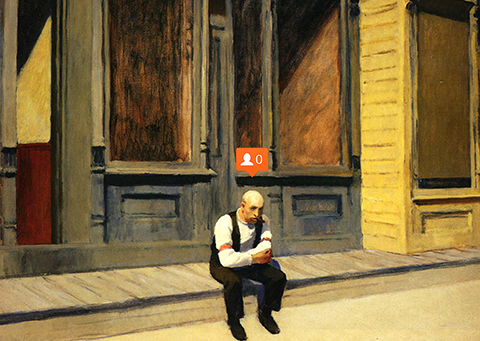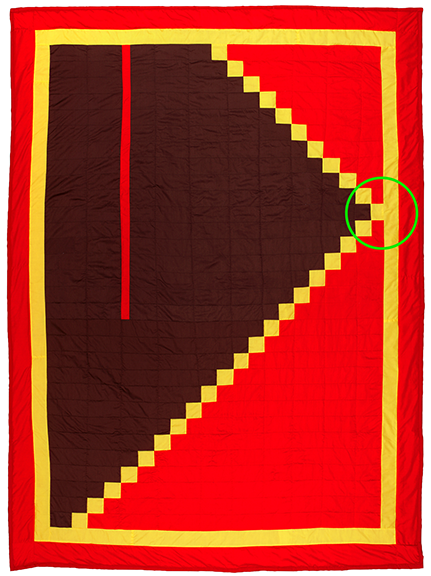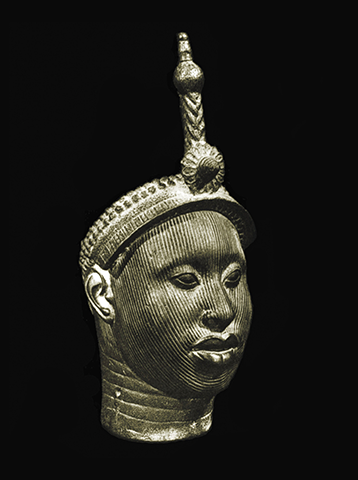Study Guide
Field 167: Visual Arts
Recommendation for individuals using a screenreader: please set your punctuation settings to "most."
Sample Selected-Response Questions
Competency 0001
Artistic Processes
1. A painter who employs the glazing technique would take which approach to achieve a visual effect?
- adding the main surface colors to a rough underpainting, in order to achieve a highly composed look
- applying layers of translucent medium to areas of dry paint, in order to achieve rich and luminous hues
- adding paint to the canvas liberally, in order to achieve an expressive three-dimensional texture
- completing a painting in one sitting, in order to achieve lively brushwork and an impression of spontaneity
- Enter to expand or collapse answer. Answer expanded
- Correct Response: B. This item requires the candidate to apply knowledge of the characteristics and uses of various tools, materials, techniques, technologies, methods, and processes used in a wide variety of art media and types of artmaking. Glazing is a painting technique in which a layer of translucent paint is typically applied on top of an opaque, dry layer of paint, although the underpainting can also be translucent. The optical mixing of the glaze and underpainting results in a rich luminosity.
Competency 0001
Artistic Processes
2. A team is brainstorming ideas for ways to develop a proposed concept for a video game. Which approach is likely to be most effective as the first step in this process?
- encouraging and recording suggestions for as many ideas as possible without critiquing ideas as they are offered
- mapping the connections between an idea and others already recorded as each new idea is suggested
- discarding any suggestions that reflect ideas that are easily recognizable from existing video games
- exploring possible ways to expand or dissect each idea as it is suggested to discover alternate approaches
- Enter to expand or collapse answer. Answer expanded
- Correct Response: A. This item requires the candidate to demonstrate knowledge of how artists and designers generate and conceptualize artistic ideas and work, organize and develop artistic ideas and work, and refine and complete artistic work. Brainstorming refers to uninhibited generation of ideas and solutions. It is often done collaboratively, with people throwing ideas out to a group, and is often used as a first step in creative problem solving.
Competency 0002
Visual Literacy
3. Use the reproduction below of Instagram – Edward Hopper Sunday (2014) by Nastya Zerebecki1 to answer the question that follows.

A painting of a man wearing a white long sleeve shirt, orange arm bands over his upper arms, a black vest, black pants, and black shoes. He sits on a sidewalk with his arms folded in front of him and resting on his thighs. Behind him appears to be a storefront. Above his head is an orange social media icon indicating the number of friends one has in one’s network. The number in the icon is zero, indicating that the seated man does not have friends.
Appropriation used in the creation of the work has primarily which effect?
- conveying the original work's theme with a modern twist
- questioning the legitimacy of authorship
- suggesting that the original work is dated and out of touch
- encouraging the use of social media
- Enter to expand or collapse answer. Answer expanded
- Correct Response: A. This item requires the candidate to demonstrate knowledge of modernist and/or contemporary approaches to visual organization. Appropriation is a contemporary approach to art in which an existing artwork, often a famous one, is used in part (or sometimes in whole) for a new artwork. In the work above, the artist added to an Edward Hopper painting a social media icon that indicates the number of friends in a user’s social network. The icon indicates zero friends and is positioned above the figure in the painting, as if it were a thought balloon, in an apparent expansion of the work’s theme of loneliness and isolation.
Competency 0002
Visual Literacy
4. In landscape painting, the use of atmospheric perspective results primarily in a:
- shimmery, radiant appearance to the sky.
- source of light seeming to come from off the support.
- defined point or points on the horizon line.
- realistic illusion of three-dimensional space.
- Enter to expand or collapse answer. Answer expanded
- Correct Response: D. This item requires the candidate to analyze how various approaches to visual organization are used to create an effect or communicate an idea in a given work of visual art. Atmospheric perspective is based on the fact that distant objects take on a bluish hue due to sunlight passing through particles in the atmosphere. In painting, using atmospheric perspective creates a realistic illusion of three dimensionality.
Competency 0002
Visual Literacy
[On an actual exam, the examinee will see the following directions and will have the ability to click anywhere on the image. A bullseye will appear on the spot where the examinee clicks. In this study guide, the examinee can click anywhere on the image. A bullseye will appear in the region where the examinee clicks, but not the exact spot on which the examinee clicks. In the actual exam, the examinee may change the location of the bullseye by clicking elsewhere on the image until they are satisfied with their choice.]
5. Directions: Examine the reproduction below of Bricklayer (2003) by Louisiana Bendolph2. Click on the region that represents where the viewer's eye is most drawn due to the implied line used in the work.
A rectangular red quilt with a large triangular orange area and large triangular brown area. The two areas are separated by many yellow squares that meet in a point in the upper right portion of the work. A thin orange perpendicular line is in the brown triangular area.
- Enter to expand or collapse answer. Answer expanded
-
Correct Response: The area in the upper right of the design that comes to a point.

A rectangular red quilt with a large triangular orange area and large triangular brown area. The two areas are separated by many yellow squares that meet in a point in the upper right portion of the work. A thin orange perpendicular line is in the brown triangular area. The area in the upper right of the design that comes to a point is marked with a target, indicating it as the chosen response.
This item requires the candidate to demonstrate knowledge of modernist and/or contemporary approaches to visual organization. Implied line is a sense of visual line. In the quilt, two groups of squares form a triangular shape that draws the viewer’s eye to the point in the upper right portion of the work.
Competency 0003
Historical and Cultural Context
6. Use the photograph below of the bronze head of an Oni in the Ife culture (c. twelfth through fourteenth century)3 to answer the question that follows.

A bronze sculpture of the head of a man. Fine lines are scored in the face. More fine details are in the man’s headdress, which appears to be a crown.
Bronze sculptures from the Ife culture of West Africa, such as this, were made by using which technique?
- ivory turning
- lost-wax casting
- ceramic firing
- wood carving
- Enter to expand or collapse answer. Answer expanded
- Correct Response: B. This item requires the candidate to recognize significant characteristics of artwork from global cultures and communities, from prehistoric times to the present. The Ife culture of West Africa mastered the art of lost-wax casting, a sculpture technique in which molten metal is poured into a wax mold and then the wax is melted, leaving the metal to harden in the shape of the mold. Fine details, such as those seen in the work, are characteristic of lost-wax casting.
Competency 0003
Historical and Cultural Context
7. Which comparison would a teacher use to best illustrate how the functions and roles of visual art can change over time?
- a Mesopotamian ziggurat from the Early Bronze Age compared to a temple from Classical Greece
- a ninth-century Irish illuminated manuscript compared to a twelfth-century stained-glass window in an English cathedral
- a statue of an ancient Roman emperor compared to a portrait painting of a seventeenth-century French monarch
- a sixteenth-century Chinese scroll painting of mountains compared to a nineteenth-century Japanese ukiyo-e print
- Enter to expand or collapse answer. Answer expanded
- Correct Response: D. This item requires the candidate to recognize the functions and roles of the visual arts in everyday life from prehistoric times to the present. Sixteenth-century Chinese scroll paintings of mountains typically addressed a philosophical theme of harmony with the natural world. Nineteenth-century Japanese ukiyo-e woodblock prints, by comparison, were primarily made to entertain and featured popular kabuki actors of the day, courtesans, city life, and erotic scenes.
Competency 0004
Art Criticism, Integration, and Community Engagement
8. Which review of a sculpture most exemplifies the evaluation stage of a critical process?
- The effectiveness of the sculpture lies ultimately in its powerful message of shared humanity and unity—that we are all in the same boat, heading in the same direction.
- Though the figures seem to be spilling over the sides of the boat, the sculpture is balanced symmetrically. The implied line of the oars provides a sense of movement.
- Three of the animal figures in the sculpture are biting each other, yet they continue to paddle the boat, which might symbolize that life has struggles and accomplishments.
- Seven figures are cramped in a boat. Some are human forms, some are animal. The dominant figure in the sculpture is human and is positioned in the center of the boat.
- Enter to expand or collapse answer. Answer expanded
- Correct Response: A. This item requires the candidate to identify stages of a critical process, including, but not limited to, description, analysis, interpretation, contextualization, and evaluation. Evaluation is typically the last stage of the critical process, after description, analysis, and interpretation. In this last stage, a judgment or judgments are made about the work. The correct response calls the sculpture “effective,” a judgment that would not come in the other stages.
Competency 0004
Art Criticism, Integration, and Community Engagement
9. The aesthetic theory known as formalism takes primarily which approach in critiquing a work of art?
- focusing on realistic representation and the degree to which the work looks lifelike
- emphasizing how the elements of art and principles of design organize the work visually
- assessing the extent to which the work arouses an emotional response in the viewer
- analyzing how the work conveys inherent meaning through its use of signs and symbols
- Enter to expand or collapse answer. Answer expanded
- Correct Response: B. This item requires the candidate to apply knowledge of art criticism and aesthetic theories and their connections to works of visual art, including using art criticism and aesthetic principles to understand enduring themes and concepts explored by artists. Formalism is an aesthetic theory in which art is analyzed for its formal elements, such as elements of art (e.g., line, texture, space) and principles of design (e.g., emphasis, balance, pattern).
Acknowledgments
1Nastya Zerebecki. Instagram - Edward Hopper Sunday. Reprinted with permission.
2Bendolph, Louisiana (b. 1960) © 2019 Louisiana Bendolph / Artists Rights Society (ARS), New York. "Bricklayer" variation, 2003. Cotton. 89 x 68 in. Collection of: High Museum of Art museum purchase and gift of the Souls Grown Deep Foundation. Location: High Museum of Art, Atlanta, Georgia, U.S.A. Photo Credit: Pitkin Studio / Art Resource, NY.
3Nigeria: Bronze Crowned Ooni (traditional ruler) of the Ife Kingdom. / Pictures from History / Bridgeman Images.

